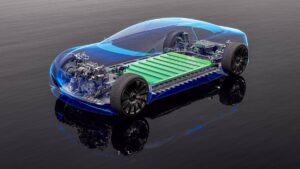Tim Treadgold: Emerald starts to shine, as we said it would

Pic: Schroptschop / E+ via Getty Images
Developing a new mine, and buying another project at the same time sounds like a challenge for a small company, but that’s just what well-connected Emerald Resources (ASX:EMR) seems likely to do after a double-barrelled finance deal was struck last week.
Low-key to the point of almost disappearing off most investor radar screens, Emerald has negotiated two layers of finance from big Canadian resource funding specialist Sprott Private Resource Lending.
A $US60m ($85.7m) facility will meet the lion’s share of completing construction of Emerald’s maiden project, the Okvau goldmine in Cambodia which featured in a Stockhead story last October.
A $US100m facility is also being made available by Sprott to pay for potential developments and, most significantly, “acquisition opportunities identified by Emerald and agreed with Sprott”.
In other words, Emerald is on the way to becoming the first significant gold producer in Cambodia, while having the financial firepower to complete a takeover of Capricorn Metals (ASX:CMM) it started earlier this year but failed to finalise – or do something different with the Sprott capital.
The market, so far, has failed to see Emerald’s plan which is pretty much as Stockhead outlined last year.
The process looks like this:
• Assemble a highly-qualified team of mining professionals with complementary skills in developing and operating mines as well managing the business side of things — a step too many miners overlook as has been seen recently among small-to-medium Australian gold stocks;
• Locate a project ripe for development, which is the emerging Okvau mine which is expected to yield around 106,000 oz of gold a year for a minimum of seven years at a life of all-in sustaining cost of around $US737/oz;
• Outlay $US98m to build Okvau, with another $US23m required in sustaining capital, numbers which point to Emerald needing a final capital or debt injection to finish the job;
• Leverage off that operating base which is expected to achieve a capital cost payback in 1.8 years at the current gold mine of close to $US1400/oz with the internal rate of return calculated to be 63 per cent; and
• Go hunting for more projects to fully utilise the skill set of the management team which has a history of operating much bigger projects than Okvau.
- Subscribe to our daily newsletter
- Join our small cap Facebook group
- Follow us on Facebook or Twitter
That final step could already be underway because earlier this year an approach to acquire financially-stressed Capricorn was rejected, but the door was left open for a second try.
What’s happened is that Capricorn had found the job of developing its promising but low-grade Karlawinda project in WA’s Pilbara region a heavy lift, leading to management upheaval and a stalled potential project.
Emerald, with a private partner in Hawke’s Point, saw an opportunity to clean up the mess at Capricorn, lobbing a takeover bid priced at 11c a share in a mix of cash and shares.
That offer was rejected in early April, in the same way a move on Capricorn by Regis Resources (ASX:RRL) priced at 11.4c was also knocked back.
But, if you lift the lid on the multiple bids and consider the obvious interest of several suitors, an interesting picture emerges because most of the key players are known to each other, and have in some cases worked together in the past.
Morgan Hart, Emerald’s managing director, was once chief operating officer of Regis while Mick Evans, an Emerald director, was chief development officer at Regis.
Sitting at the top of the Emerald/Regis old boys’ network is Simon Lee, chairman of Emerald and an astute businessman with extensive connections in Australia and Asia which will open many doors for the business he is shaping.
Armed with a skilled management team, and a development project which should be producing gold from next year, Lee appears to have lined up a takeover target in Capricorn and the finance from Sprott to complete the job.
The attraction in Capricorn is Karlawinda, a gold deposit outlined more than a decade ago by the old Western Mining Corporation, and then passed through the hands of several other owners, including Independence Group (ASX:IGO) before being acquired by Capricorn three years ago.
Back in early 2016 the gold price was around $US1130/oz ($1590/oz).
Today the gold price is up 20 per cent to around $US1393/oz, or up 25 per cent in Australian dollars to $1989/oz, with the increases likely to have enhanced the economics of Karlawinda which has been shown to contain more than a million ounces of gold but in ore assaying just 1.1 grams per tonne (g/t).
In theory, Karlawinda could be handsomely profitable and could even get bigger with more exploration, but a bulk, low-grade mine requires a lot of processing to extract the gold and doesn’t need much to go wrong to damage the business case.
Management at Emerald, when it bid for Capricorn earlier this year, obviously believed it had the skill set, but lacked the financial firepower to offer more than a 50/50 mix of cash and shares.
With Sprott’s $US100m available, an all-cash deal suddenly looks more do-able given that Capricorn today is valued on the stock market at around $83m, or $US58m.
Relations between Capricorn, Emerald and its private partner, Hawke’s Point, appear amiable despite April’s rejection of the 11c bid, because immediately after saying the price undervalued the company and its assets Capricorn management added:
“However, Capricorn has advised Emerald and Hawke’s Point that it remains open to considering a superior proposal should one be submitted.”
Since that April 1 invitation to call again the game has changed in several ways.
The gold price is up 10 per cent, and Emerald has secured two financing packages from Sprott, arguably the gold sector’s canniest resource financing organisation.
What hasn’t changed is Capricorn’s need to find a partner to develop Karlawinda or for the project to get an owner able to do the job.
UNLOCK INSIGHTS
Discover the untold stories of emerging ASX stocks.
Daily news and expert analysis, it's free to subscribe.
By proceeding, you confirm you understand that we handle personal information in accordance with our Privacy Policy.








